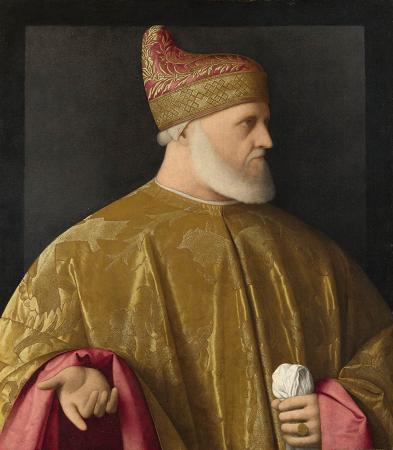Portrait of Ruler. A monarch is the head of state in a monarchy. A monarch may exercise the highest authority and power in the state, or others may wield that power on behalf of the monarch. Usually a monarch either personally inherits the lawful right to exercise the state's sovereign rights or is selected by an established process from a family or cohort eligible to provide the nation's monarch. Alternatively, an individual may become monarch by right of conquest, acclamation or a combination of means. A monarch usually reigns for life or until abdication. If a young child is crowned the monarch, a regent is often appointed to govern until the monarch reaches the requisite adult age to rule. Monarchs' actual powers vary from one monarchy to another and in different eras; on one extreme, they may be autocrats wielding genuine sovereignty; on the other they may be ceremonial heads of state who exercise little or no direct power or only reserve powers, with actual authority vested in a parliament or other body. A monarch can reign in multiple monarchies simultaneously. For example, the monarchy of Canada and the monarchy of the United Kingdom are separate states, but they share the same monarch through personal union. Monarchs, as such, bear a variety of titles-king or queen, prince or princess, emperor or empress, archduke, duke or grand duke, emir, sultan, or a pharaoh. King is mostly used as a general term for monarchs regardless of title. A king can also be a queen's husband, and is the general title for a male monarch. If both of the couple reigns, neither person is generally considered to be a consort. Monarchy is political or sociocultural in nature, and is generally associated with hereditary rule. Most monarchs, both historically and in the present day, have been born and brought up within a royal family and trained for future duties. Different systems of succession have been used, such as proximity of blood, primogeniture, agnatic seniority, Salic law, etc. While traditionally most monarchs have been male, female monarchs have also ruled, and the term queen regnant refers to a ruling monarch, as distinct from a queen consort, the wife of a reigning king. Some monarchies are non-hereditary. In an elective monarchy, the monarch is elected but otherwise serves as any other monarch. Historical examples of elective monarchy include the Holy Roman Emperors and the free election of kings of the Polish-Lithuanian Commonwealth. Modern examples include the Yang di-Pertuan Agong of Malaysia, who is appointed by the Conference of Rulers every five years or after the king's death, and the pope of the Roman Catholic Church, who serves as sovereign of the Vatican City State and is elected to a life term by the College of Cardinals. In recent centuries, many states have abolished the monarchy and become republics. Advocacy of government by a republic is called republicanism, while advocacy of monarchy is called monarchism. A principal advantage of hereditary monarchy is the immediate continuity of national leadership, as illustrated in the classic phrase The King is dead. Long live the King! In cases where the monarch serves mostly as a ceremonial figure, real leadership does not depend on the monarch. A form of government may, in fact, be hereditary without being considered a monarchy, such as a family dictatorship. Monarchies take a wide variety of forms, such as the two co-princes of Andorra, positions held simultaneously by the Roman Catholic bishop of Urgel and the elected president of France. Similarly, the Yang di-Pertuan Agong of Malaysia is considered a monarch despite only holding the position for five years at a time. Hereditary succession within one patrilineal family has been most common, with a preference for children over siblings, sons over daughters. In Europe, some peoples practiced equal division of land and regalian rights among sons or brothers, as in the Germanic states of the Holy Roman Empire, until after the medieval era and sometimes into the 19th century. Other European realms practice one form or another of primogeniture, whereunder a lord was succeeded by his eldest son or, if he had none, by his brother, his daughters or sons of daughters. The system of tanistry was semi-elective and gave weight also to ability and merit. The Salic law, practiced in France and in the Italian territories of the House of Savoy, stipulated that only men could inherit the crown.
more...












